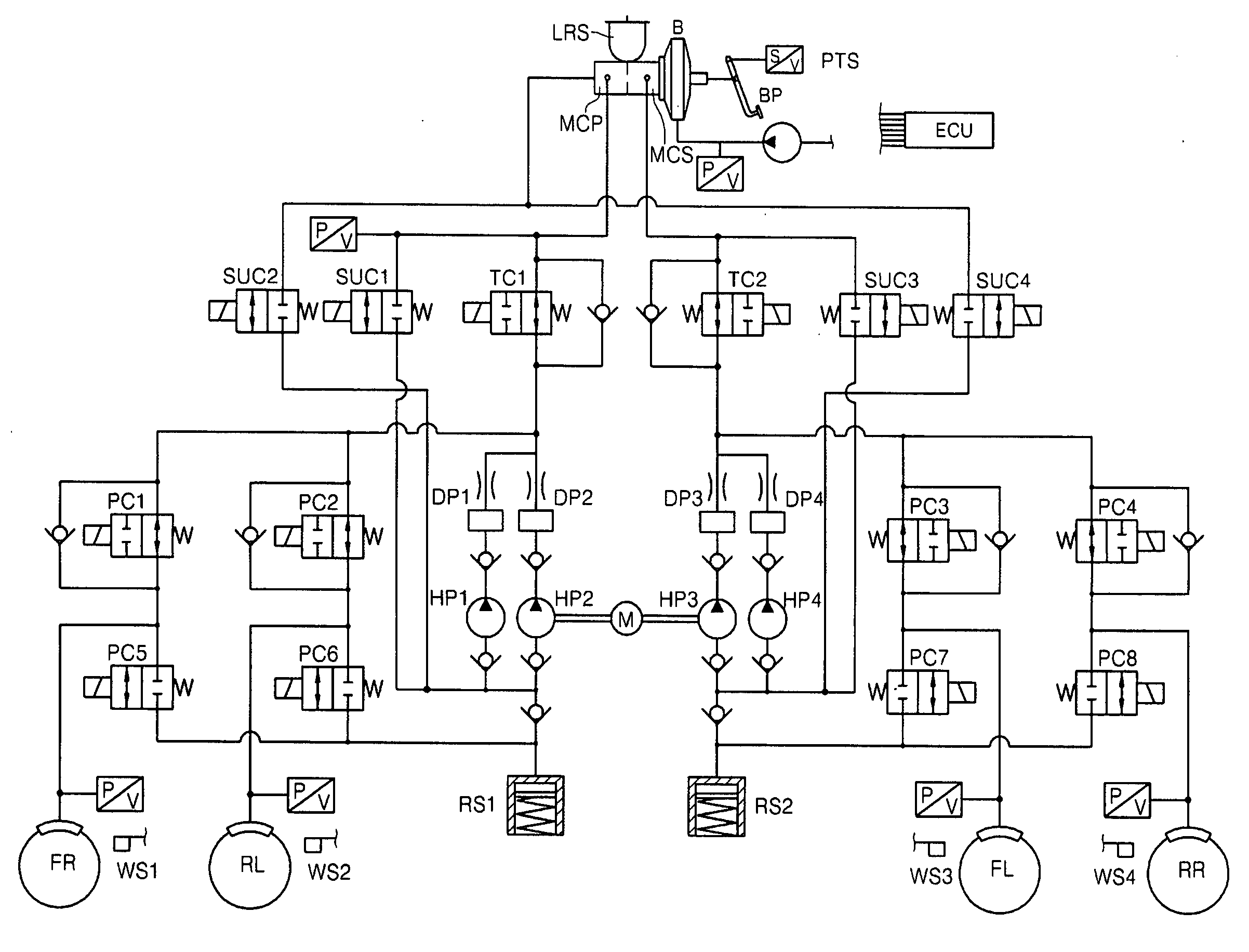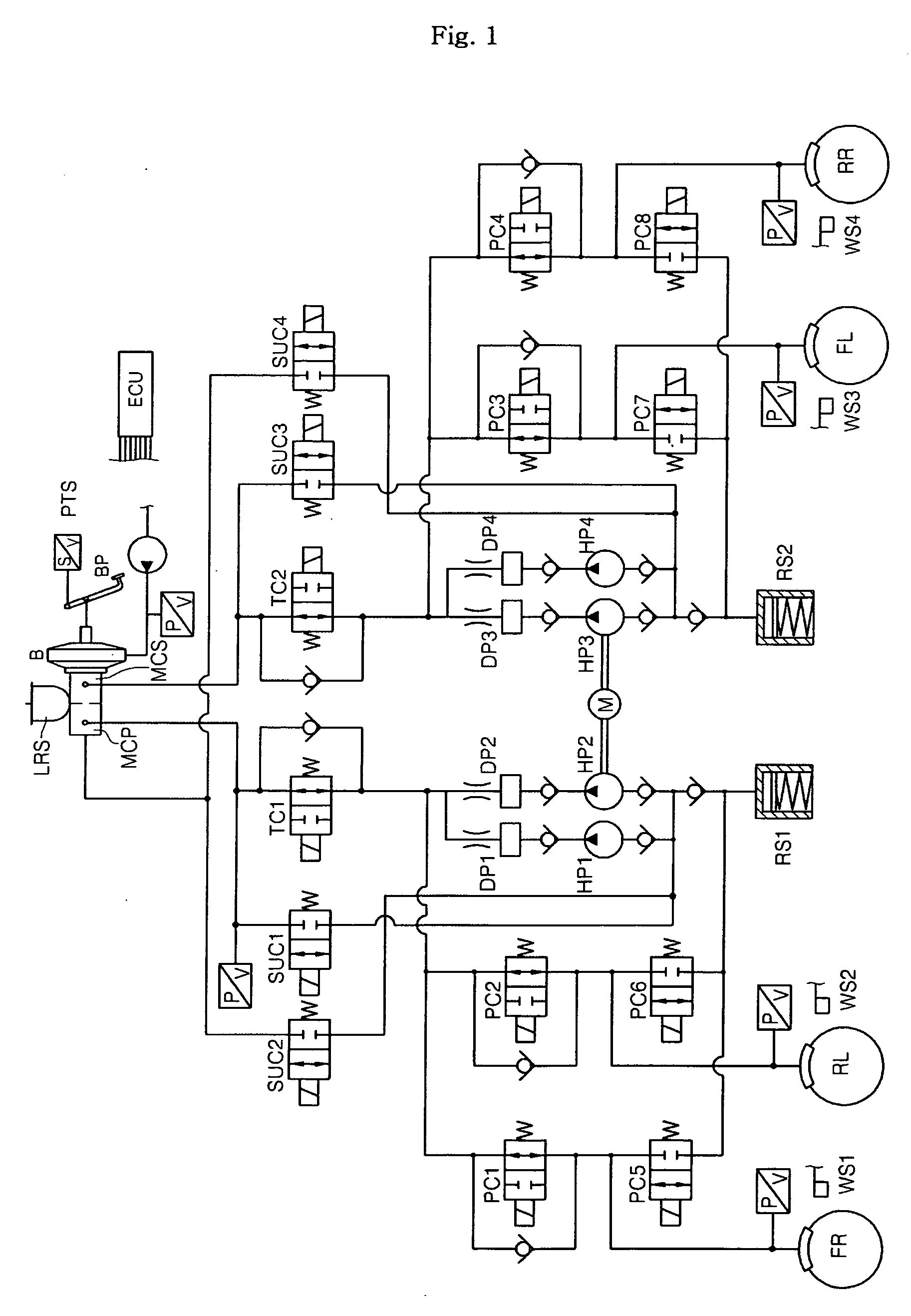Regenerative braking method for vehicle having electric motor
a technology of electric motor and braking method, which is applied in the direction of braking system, motor/generator/converter stopper, dynamo-electric converter control, etc., can solve the problems of air pollution and the unfamiliar feeling of the brake pedal by the vehicle operator, and achieve the effect of the same feeling of the brake pedal
- Summary
- Abstract
- Description
- Claims
- Application Information
AI Technical Summary
Benefits of technology
Problems solved by technology
Method used
Image
Examples
Embodiment Construction
[0022] Reference will now be made in detail to exemplary embodiments of the present invention, examples of which are illustrated in the accompanying drawings, wherein like reference numerals refer to like elements throughout. The embodiments are described below to explain the present invention by referring to the figures.
[0023]FIG. 1 is a diagram showing an electronically controlled hydraulic brake device consistent with the present invention. As shown in FIG. 1, the hydraulic brake device comprises a master cylinder MC to generate a brake pressure by operation of a booster B if a brake pedal BP is pressed.
[0024] The master cylinder MC includes two chambers MCP and MCS. Afirst one of the chambers MCP is used to control a brake hydraulic pressure to be transmitted from the master cylinder MC to wheel cylinders WFR and WRL that are installed, respectively, to a front right wheel FR and a rear left wheel RL. A normal open type cut valve TC1 is provided on a hydraulic line between the...
PUM
 Login to View More
Login to View More Abstract
Description
Claims
Application Information
 Login to View More
Login to View More - R&D
- Intellectual Property
- Life Sciences
- Materials
- Tech Scout
- Unparalleled Data Quality
- Higher Quality Content
- 60% Fewer Hallucinations
Browse by: Latest US Patents, China's latest patents, Technical Efficacy Thesaurus, Application Domain, Technology Topic, Popular Technical Reports.
© 2025 PatSnap. All rights reserved.Legal|Privacy policy|Modern Slavery Act Transparency Statement|Sitemap|About US| Contact US: help@patsnap.com



